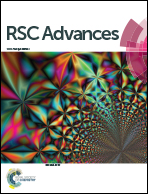Efficient and microbial communities for pollutant removal in a distributed-inflow biological reactor (DBR) for treating piggery wastewater†
Abstract
To treat piggery wastewater with a low C/N ratio, a novel distributed-inflow biological reactor (DBR) was developed that assures the proper organic flow for an efficient denitrification process. The operation of the DBR featured the use of continuous feeding and bypass flow rates (x = 0.2–0.5). Results demonstrated that under low C/N ratio conditions (3.8–5.4), bypass rates of 0.3–0.4 were desirable and resulted in COD, NH4+–N, and TN removal efficiencies of 89.2%, 97.4%, and 86.2%, respectively. Track studies elucidated the removal and transformation of organic matter and nitrogen in the DBR. High-throughput sequencing showed that Proteobacteria and Bacteroidetes were dominant in both the DBR and the sludge obtained from a wastewater treatment plant (WWTP) for seeding the DBR. Compared with the seed sludge, the populations of aerobic heterotrophic bacteria (Filimonas and Chryseolinea) and heterotrophic denitrifiers (Thauera, Halomonas, and Ottowia) were apparently enriched in DBR, and were mainly responsible for the removal of COD and NO3−–N. In contrast, the populations of ammonium-oxidizing bacteria (AOB) and nitrite-oxidizing bacteria (NOB) decreased sharply. Although stable nitrification was achieved, autotrophic nitrifiers such as AOB and NOB were unexpectedly present as minor species, probably due to the synergistic effects of autotrophic AOB and heterotrophic nitrifiers.


 Please wait while we load your content...
Please wait while we load your content...